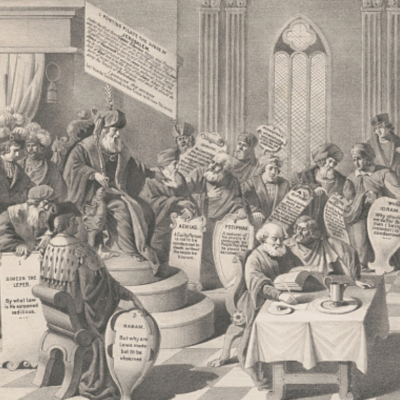We have Greeks, too, in our day; men whose souls God has touched, and across whose eyes He has flashed some rays of the glory of his Incarnate Son. Are there any Greeks among us? Rest not; keep not aloof; come near; learn of Him; look to Him and be saved… Talk of kind, winning, accessible, large-hearted men! Was there ever one like Him? He did not hide Himself; He did not turn from his fellow men, as if shrinking from their intercourse or disliking to be troubled. He made everybody feel at home with Him. He laid Himself out for meeting them, and being visited by them. He received sinners, and made them feel that He had come to save them.
This account of Jesus’ anointing provides a model of devotion and answers a challenge against devotion to him. If we continue in the noble line of Mary and Lazarus, we can be certain that others will see the truth of Jesus in our lives, and what was said of Lazarus will be said of us, too: “On account of him many … were … believing in Jesus” (John 12:11).
When therefore they saw Jesus working miracles so very stupendous, and so worthy the character of the Messiah, and that in the very time wherein the manifestation of the Messiah had been foretold, they could not but have a strong suspicion that this was He. But then it is a wonderful thing that they should endeavour his death and destruction.
His soul is held by rage: and he advances to the tomb, in Calvin’s words again, “as a champion who prepares for conflict.” The raising of Lazarus thus becomes, not an isolated marvel, but — as indeed it is presented throughout the whole narrative (compare especially, verses 24-26) — a decisive instance and open symbol of Jesus’ conquest of death and hell.
Last month, we took a survey of the various views on how we should understand Genesis 1.26[1]Fesko, J.V. Last Things First: Unlocking Genesis 1-3 with the Chris of Eschatology. (Christian Focus Publications, 2007), pp. 40-45. Those views were (1) The heavenly court view; (2) The plural of majesty view; and (3) The Trinity view. Of…
In this issue we begin to look at Dr J.V. Fesko’s brief treatment of Genesis 1.26 found in his excellent book, Last Things First. There are two major questions packed into this little phrase: (1) why does God speak in the plural and (2) what does it mean to be in the image of God? Understanding the nature of God will assist in the definition of God’s image. In other words, Is God triune, and Does the image of God in man reflect God’s triunity?







